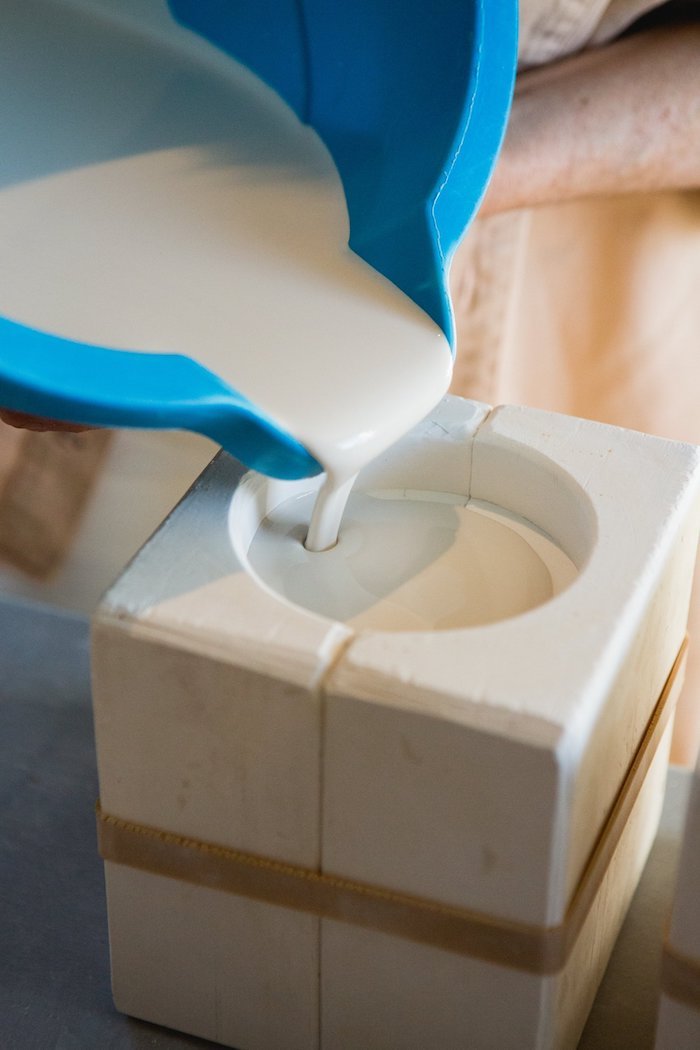What Is Slip Casting?
Slip casting is a traditional making and manufacturing technique dating back to the 18th century, in which liquid clay, known as slip, is used to create and reproduce ceramic vessels.
To cast using a slip casting process, liquid clay is poured into plaster molds fabricated from an original form. The slip forms a cast on the inner walls of the plaster and the thickness of the cast is proportional to the amount of time the liquid spends in the mold.
The type of clay used for casting is similar to that of prepared clay, which is traditionally used by potters on the wheel. The key difference is that slip is deflocculated: a process by which the electrical charge of the clay particles is reversed. When deflocculated, the clay particles resist each other and can slide more easily, resulting in a liquid clay that weighs almost as much as prepared clay but functions very differently.
Quality molds and a fine slip are essential to achieving a high-quality cast and for this reason, we make both our own plaster molds and our own slip. How the slip behaves, which is largely a function of its consistency, depends on a range of factors such as temperature, humidity, and the ratio and distribution of the ingredients used in its formulation. The correct proportions coupled with the correct environmental factors create a liquid suspension that is a joy to cast with. Liquified clay is beautiful: creamy, lush, and dynamic in a way that is both similar to and distinct from prepared clay.
